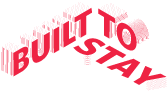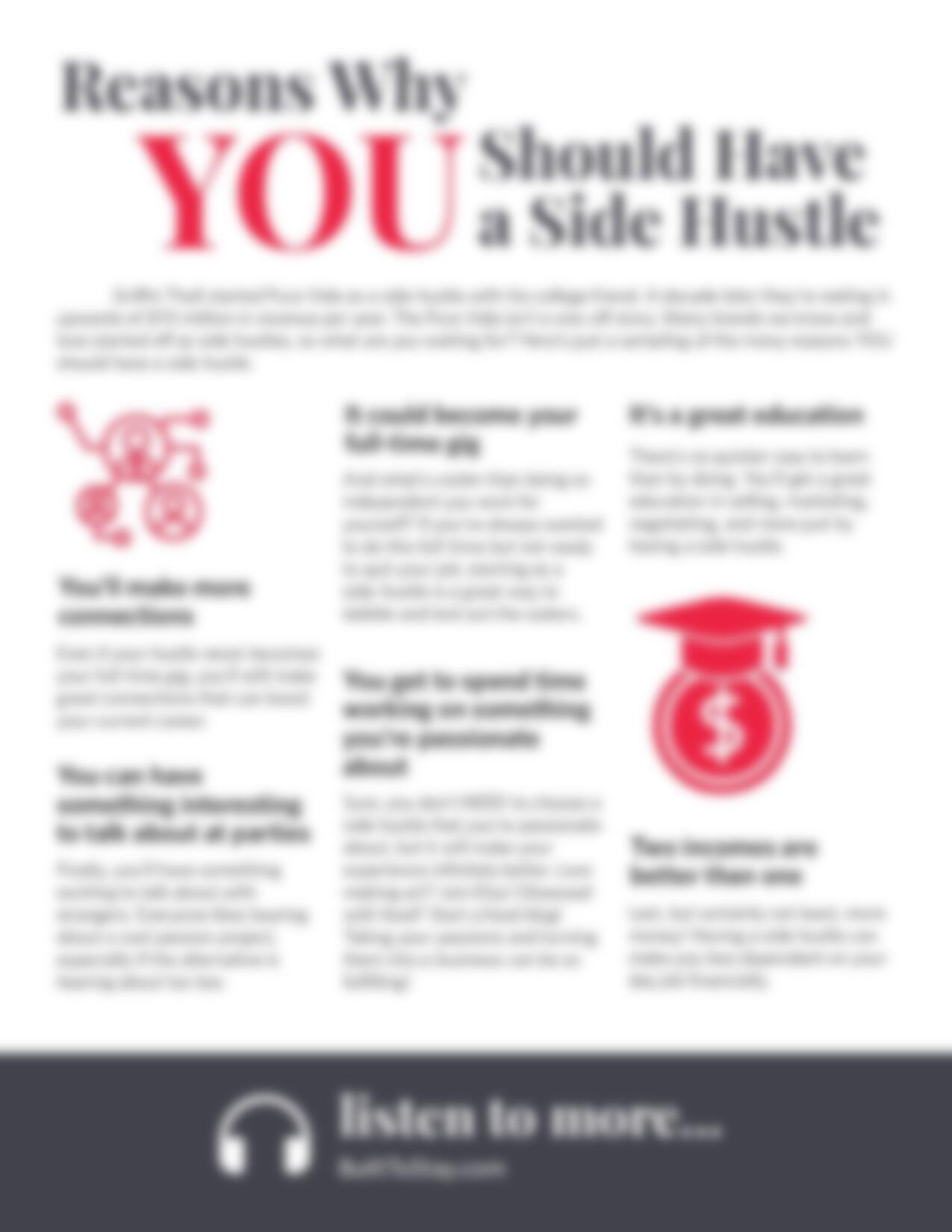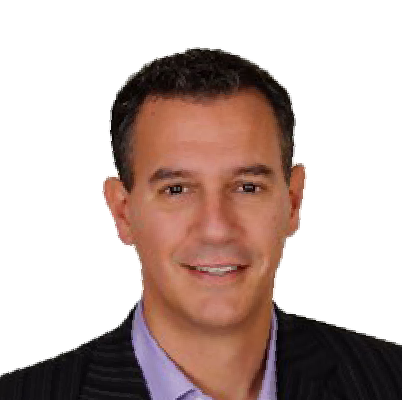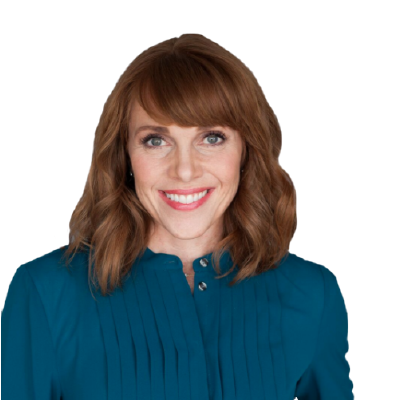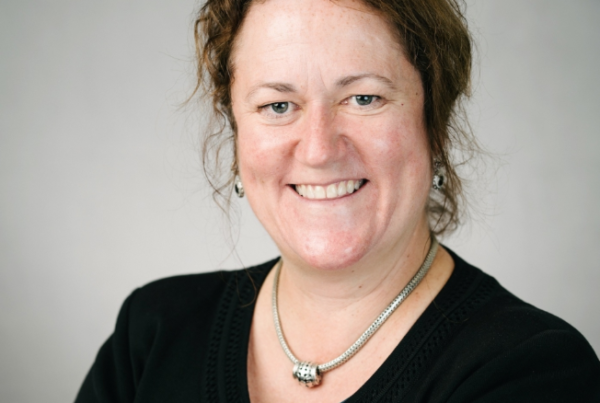(00:00)
Today on Built to Stay. We figured out how to get a business license, prepare taxes, build a website, buying a camera, watching videos on YouTube, how to take photos and edit them, basically the bare bones way to do anything in regards to starting a business. No one taught us. No one gave us a short cut. We just kind of figured it out. Welcome to Build to Stay a podcast dedicated to sticking, staying and succeeding in the business world from the blip sound lab. Here’s your host, Bart Bradshaw. Hey builders. When Griffin Thall and Paul Goodman went on a college graduation trip to Costa Rica, they had little planned besides surfing. Now almost a decade later, they run Pura Vida bracelets. The most engaged jewelry brand on Instagram. Pura Vida supports more than 650 artisans in Costa Rica, El Salvador, India, and more. Last year alone, they did $68 million in revenue. It looks like Pura Vida is building to stay and we’re excited to have Griffin on today to tell his entrepreneurial story and share some actionable insights we can use to build our businesses.
Bart: (01:06)
Griffin. Thanks for joining us today.
Griffin: (01:07)
Of course. Thanks for having me on.
Bart: (01:09)
So you co founded and built one of the most popular lifestyle brands around. Take us back to the beginning. Where did the idea for Pura Vida come from?
Griffin: (01:18)
College graduation trip to Costa Rica with my best friend Paul Goodman and you know, we found these two guys and a beach named Jorge and Joaquin just making bracelets by hand. Um, we brought back bracelets with us that night to our hotel room, look down at our risks and you know, thought we can sell these to our friends and family back in San Diego. So the next day we went back to Jorge and Juaquin’s little table they had on the beach. Um, you know, they were selling bracelets out of a little, you know, suitcase like a little cart. Um, we bought 400 braces from him, came back to San Diego, put them online and put them in a couple of local boutiques and from there Pura Vida was born.
Bart: (01:51)
That’s awesome. Um, sounds like it was a really fast start. Tell me, why did you guys think, Hey, you know, we could sell these, let’s just do it. Let’s buy 400 of these.
Griffin
(02:01)
I think we just liked that they were full and they were, you know, anyone could wear them and, and it was a great little gifting item. So, you know, we felt that if we were going to get 400 of these bracelets, then we’d be able to come back to San Diego and make a lot of people happy by giving them a souvenir from our trip.
Bart: (02:15)
Were you already looking for some sort of business to start?
Griffin: (02:18)
Not at all. We just went there just to surf and just travel and explore and take photos. And we randomly stumbled upon these two brace offenders in Germany, Costa Rica and just had the idea and ran with it.
Bart: (02:30)
And how quick were you able to sell those first 400?
Griffin: (02:34)
Uh, we sold them I think in the first like week or two back in San Diego, just out of my bedroom floor. Um, and then we sent Jorge an email, um, and asking him for a thousand more bracelets. And at the time he never had an email address. He never had a PayPal account. So we had to set him up with a couple things, um, just in case we were going to buy more. So once we sent him that email, he didn’t respond for 10 days later. So during that time we were kind of freaking out because, you know, we thought that we had a good business idea, but it definitely wasn’t gonna go much further because if he didn’t respond then we’d have to polish up our resumes and find a real job. But he did respond and it just made our day. We were so excited about that. Um, and then yeah, from there we kind of just kept going.
Bart: (03:13)
So, you know, a lot of people have spent a lot of time thinking about a business idea. I’m thinking or many ideas just going through a lot of ideas. You kind of stumbled upon one and you were just like, Hey, you know, let’s, um, seize a day. This is, this seems like a great opportunity that’s try it out. Did you at that time kind of think, Hey, this, I mean you talked about you would otherwise maybe go have to polish your resumes and actually go interview for a full time job. Did you think, Hey, this is actually like a big business opportunity or did you think this is, you know, a short term kind of side hustles sort of opportunity.
Griffin: (03:48)
This was our first job out of college so we didn’t really have anything else to compare it to. And for us at the time, you know, it was just a a means to getting money back from our trip and if it exceeded that great and if we able to maybe make a short term business out of it, great. But you know, it turned out to be a very longterm sustainable brand.
Bart: (04:05)
Yeah. Obviously is, it’s very cool. And you’ve been around for about 10 years now, right?
Griffin: (04:10)
Uh, yeah, almost like nine and a half years.
Bart: (04:13)
Okay. Nine and a half years. Super popular on Instagram. Is that the main way? Like do you do most of your business online?
Griffin: (04:20)
Yeah, we’re about like one third through our wholesale channels. And then the other two thirds is through e-commerce.
Bart: (04:26)
Okay. So you’ve got a popular online presence, two thirds of your business there, but you also sell wholesale into retail outlets all over the country, all over the world.
Griffin: (04:37)
Yeah. We sell to, you know, a bunch of a surf shops, boutique stores, gift shops, um, you know, just kind of a, like a counter items. Um, you know, we sell to a lot of major surf chains that are all around the coastal areas. Um, and yeah, I mean the whole sale program is really growing well
Bart: (04:52)
from the beginning. Were you kind of a surfing brand?
Griffin: (04:55)
Yeah, I mean, I would say a mix between like surf and fashion. Um, you know, not, not too far in the fashion, but definitely more like in the surf area. And then just through kind of like festivals getting popular and, um, you know, this kind of whole Instagrammable era that we live in, um, it’s really caused people to make Pura Vida a bigger traveling, inspirational brand.
Bart: (05:16)
So help us understand a little bit more. Like you saw the first 400, you wanted to order another a thousand, did you say? Yep. Now this thousand and then like, what did you do next? Did you start like creating a business entity and like, like what was that process like?
Griffin: (05:34)
Um, yeah, I mean, so after that we figured out how to get a business license. Um, you know, prepare our taxes, build a website, um, you know, buying a camera, um, watching videos on YouTube, how to take photos and edit them. Basically the bare bones way to do anything in regards to starting a business. No one taught us, no one gave us a shortcut. We just kind of figured it out.
Griffin : (05:56)
It was 2010.
Bart: (05:58)
Yes. So it was super early days with Instagram or some of these other channels that people use to grow their brands. Did you go right there?
Griffin: (06:09)
Yeah, I mean, this was before Instagram, so we were just marketing on Facebook. Um, we would go to college campuses, talk about our Pura Vida story at, um, sororities and fraternities. We’d hand out bracelets and we’d ask them to like us on Facebook. Um, once we did that, um, week after week we really started to get the word out and people would post on their Facebook wall saying, check out my new Pura Vida bracelets, handmade, blah, blah, blah. Like basically everything that they felt organically about the brand they were talking about. And it got us a ton of eyeballs to our page, a ton of organic followers to like our Facebook page. And then after that happened, Instagram was created.
Bart: (06:45)
Okay. So what were the challenges in that first six months or 12 months? Like, it sounds like things went pretty well, but were there challenges, things that you kind of think back on or like glad that’s over?
Griffin: (06:59)
Um, I would say our biggest challenge was just inventory. Um, you know, the artisans that we found, uh, Horian Lockean, they couldn’t find people fast enough to join their team. Um, all the bracelets are handmade. They’re still handmade. Um, they’re only tools that they use to make them our candles and scissors. So it’s very, very authentic products. Um, and at the beginning, you know, the scale is difficult to judge because every week or month we’d be saying, you know, more bracelets, a thousand more, 10,000 more, and they didn’t know how to judge that. So at the beginning stages inventory, it was a big challenge.
Bart: (07:31)
Got it. And now you’ve, you’ve expanded beyond Costa Rica. You have a number of people working in Costa Rica, but also elsewhere.
Griffin: (07:40)
Costa Rica, El Salvador, um, India, we’ve expanded to a whole jewelry line. We have rings, we have necklaces, earrings, um, those are handmade in India as well. So, you know, it’s just kind of fulfilling our mission of supporting artists worldwide.
Bart: (07:54)
So who’s buying these? I’ve heard the term Visco girls and my producer here says that’s a, a large part of your target market and that’s who’s buying this. Is that accurate? And who are these people?
Griffin: (08:09)
Yeah, I would say that they are millennial, gen Z girls. Um, you know, from a middle school, high school and college, um, people that are obsessed with brands online. Um, you know, they have their Hydroflask water bottle. They have their Birkenstock shoes, they have their oversized graphic tees. Pooka shell necklace is a scrunchy on their wrists and then on their other, um, risks as a ton of Pura Vida bracelets. So I feel like, um, we were a big part of kind of creating this persona, this type of customer, um, you know, that loves this stack of five, 10 brands and you know, it’s, it’s become really popular throughout, uh, you know, the college campuses and the high school campuses.
Bart: (08:46)
Does it feel like that just kind of happened? Did you guys have a hand in kind of creating that, uh, that type of persona? Like did you see it or you know, what, how did that evolve?
Griffin: (08:58)
No, I mean we didn’t even know we were creating this person. It just kind of popped up when we started seeing our brand on all the major blogs, you know, New York times, Yahoo finance, pretty much every other major publication started talking about us as one of the big brands, setting the trend for the Visco girl.
Bart: (09:15)
Interesting. That’s not bad when you just find yourself popping up on the New York times and other places where tons of eyeballs it was that just like unreal.
Griffin: (09:28)
Yeah. I mean it’s, it’s, it’s still happening every week. We’re on a, another big publication, so we’re kind of just riding it right now. Um, it’s definitely not something that we’re like needing for growth or anything. It’s just kind of a cool way to say that Pura Vida as part of this big trend that’s being set right now.
Bart: (09:42)
Yeah. Have you done, um, much beyond kind of that organic, you know, social media, content creation, that sort of thing? Have you done a lot of paid advertising as well?
Griffin: (09:54)
Uh, yeah. We’re one of, um, Facebook and Instagrams, you know, largest ad buyers right now just because, um, you know, we’re driving so much traffic to our Shopify store. We’re one of the largest brands on Shopify plus, and we’re really utilizing Facebook and Instagram, um, on the organic and paid side as much as possible to grow our business.
Bart: (10:12)
And was that always the case or did you at some point say, Hey, let’s actually do some paid as well?
Griffin: (10:18)
Um, yeah, we’ve been doing paid since the first day that Facebook opened up their ads manager and then once Instagram opened it up, we were actually the case study brand to buy ads on Instagram. So there’s a bunch of articles about how Pura Vida was one of the first brands to test the Instagram paid platform.
Bart: (10:36)
Okay. Very cool. Because I think there’s a lot of businesses that kind of get the word out via those similar channels like Instagram, Facebook, Pinterest, and they may not do as much paid advertising. Um, what’s your advice for them? Like why did you guys decide to do it? Has it been worth this? It seems like it, but tell us your thoughts on that.
Griffin: (10:58)
Yeah, I mean it’s definitely been worth it. Um, it’s a lot of scale drastically. Um, I would say it’s really important to have a really a really technical media buyer when you’re trying to find the best person to do it. Because if not, you can lose a lot of money very quickly. It’s basically like day trading, your brand online. And if you don’t know what you’re doing, then it’s easy to just kind of get lost in buying ads.
Bart: (11:20)
So did you hire someone in house or an Agency?
Griffin: (11:23)
We’ve been through five agencies and the agency we’ve been with now, we’ve been with over I think four years now. Um, the first couple of years we went through a bunch of different agencies and individuals that would just, you know, place ads for us. And then, um, we kind of found our way to the current agency that we’re with and they’ve been amazing for us.
Bart: (11:43)
So they, do they do everything, like create a, the creative, the artwork, all that as well? Or do they…?
Griffin: (11:49)
no, just this, just the bidding. Yeah.
Bart: (11:51)
Okay. So you, any videos that they may ask for, or obviously they can probably leverage your social media posts and things like that and they amplify it.
Griffin: (12:02)
The little more complex than that, but basically they’re, they’re setting different bids on, um, different ad sets and basically finding new audiences and, you know, finding ways to increase like LTV and AOV for each different. Um, audience and it works well because we know that which type of customers on which platform. So we have a certain demographic on snap, a certain demographic on Instagram, a certain demographic and Pinterest and Facebook and Google too. So we have a different person that we’re targeting on all five of these social channels and then applying budget to each of those.
Bart: (12:32)
Yeah. So they’re creating audiences, look alike audiences, they’re trying to figure out who’s going to respond to what and you already know some of that or they already know some of that. Based on your current audiences on this different platforms, you’ve expanded your product, um, lines help us understand a little bit more about that. You started with the bracelets. What made you decide to do additional products and how did you go about doing that? Was that kind of just like, Hey, let’s, let’s add this type of jewelry or, or was there kind of strategy around it or what worked?
Griffin: (13:04)
So there wasn’t really much strategy kind of happened by accident. We posted a photo of an influencer wearing bracelets on our Instagram and she was wearing a ring that had a wave in it. So what were people commenting? They were all commenting about where do I buy that silver wave ring? So there was no place to buy it online. And we just thought that we would test out a new category that had nothing to do with string bracelets. And we started selling the silver wavering and it’s been our best selling individual skew we’ve had forever.
Bart: (13:33)
That’s awesome. So now you have a line of, of jewelry around rings and things like that and you basically just said you followed the, the comments, you followed the interest.
Griffin: (13:44)
Yeah, so we basically designed products that our customers are wanting instead of just swinging for the fences and coming out with a new category every year, like some brands do. Um, we stay very focused on the jewelry category, the affordable, um, affordably priced jewelry, especially products between, you know, five and $30. And I feel like our customers resonate really well to that.
Bart: (14:04)
Yeah. How big is your team these days?
Griffin: (14:07)
We have about 35 people in our office and the Hoya. Um, and then we have a couple of different offices that do like fulfillment and customer service.
Bart: (14:14)
No. Vera Bradley recently acquired the majority share of pure veto, right? Correct. How, how has that transition been? Has it changed your company a lot or is it similar?
Griffin: (14:25)
So basically the whole, the whole purpose of, um, working with your Bradley was so they could take over back office functions of the brands and let us focus on social media, design, sales, marketing, branding and team culture instead of the others.
Bart: (14:39)
So if you could go back, you know, looking back on the last night and a half years, is there anything you would absolutely do differently?
Griffin: (14:46)
Over the past couple of years we’ve been, we’ve been hiring a bunch of, um, employees that have talent from, uh, multiple industries up, Pura Vida or sorry, not at period at other brands. And it’s been very rewarding to see them come in and teach us things that we never knew existed about building a brand. So I feel like from the beginning, if we were to recognize, um, seven key hires early on, it would allow us to scale the business quicker. In the early days where me and Paul kind of tried everything ourselves. You know, if something didn’t work we tried again. But if we hired the right manager from the beginning, then they would have had the knowledge to tell us how to scale correctly.
Bart: (15:21)
Yeah. That’s interesting. Do you, do you find value though in you having done most of it?
Griffin: (15:27)
Yeah, I mean I definitely, definitely find value in it. I feel like we’ve been able to scale the business pretty much on our own. We’ve never really had, I mean we’ve never had an investor, we’ve never had a, a board of people that just kind of coached us on building a brand. It’s kind of just been me and Paul. So you know, we’ve been very bootstrapped and scrappy building our business. So I feel like if we were able to bring on talent in the earlier years, we wouldn’t have learned that as much ourself. But the brand would have scaled much quicker.
Bart: (15:54)
Yeah, there’s trade offs there. Um, okay. Well what’s next for you and what’s next for pure Avida?
Griffin: (16:01)
Yeah, I mean I think for me it’s just stinks super focused on the brand and making sure that our team culture, um, is that an all time high. I want to make sure all of our employees are so happy to work here. Um, they love pure veto. They love coming into the office every day. I’m also focusing on the brand image, what influencers we’re working with. Um, the videos that we’re putting out, the photos that we’re putting out and making sure that all the imagery that we have inside of our emails have a consistent message to new and current customers.
Bart: (16:28)
Yeah, that makes sense. So our builders, you know, we call them builders. Everybody who’s listening to this, whether they’ve already started a business or they’re thinking about it, they’re looking for good advice. They’re looking to understand from people who have done it before, what are the key things that they should be thinking about as they start or build their own business?
Griffin: (16:50)
I would say the first thing. Um, we live in a very visual era right now and I think it’s very important to have every brand owner know how to use a camera and use Adobe light room to shoot and edit photos. Um, the worst thing that you want to do is start a brand and then have to outsource everything. And I think it’s important as a business owner to know how to shoot photos and edit them. And I did a lot of that for our brand in the early years and it allowed us to scale quickly. Um, in terms of our social media strategy, the next thing that I would recommend is Shopify as the only eCommerce platform that people should use. So don’t even worry about using Magento or any of the other, um, eCommerce solutions. So log into Shopify, set up an account, pick a theme that you like and then start messing around with like the homepage layouts and the product page templates because it’s very easy and it’s very valuable if you know how to run a Shopify store,
Bart: (17:37)
why Shopify versus some of the others?
Griffin: (17:40)
Um, because you don’t need a developer, um, it’s a hosted solution, so you don’t need a server to run it. Um, and it’s just very easy and user friendly to go in drag and drop things, upload photos at new products. It’s just, it’s just the best solution. And I would say that we wouldn’t be here without Shopify. Yeah.
Bart: (17:56)
I use Shopify for, you know, one of my businesses as well. And it, it, it absolutely, I mean, it has a ton of integrations with different apps and things, so, yeah, I agree with you there. I was just curious.
Griffin: (18:07)
Um, number three, uh, I would say, you know, you definitely gotta be, you gotta be scrappy when starting a business. You know, people that think that success just happens overnight because they see you got like, you know, tons of followers. I don’t think that’s true. Um, and I know it’s not true. So I think people need to focus on being patient. It’s the same thing, you know, with changing your diet or working out or building a house. I mean, it doesn’t happen overnight. So I think people need to realize that if they’re building a business, it’s going to take a long time to get through that proof of concept stage then to scale stage and then to be creative and how your customers coming back for repeat purchases.
Bart: (18:39)
Yeah, that’s really good advice. I think, uh, there’s always this kind of feeling that, I mean, if you haven’t seen what someone has gone through, right, what you’ve done over the last nine and a half years are the work that you put in and you just see the 1.8 million followers on Instagram where you hear the 68 million in revenue. You don’t know, you know, what it took to get there. So good advice. So Griffin, really appreciate your taking some time to talk with us today. Yeah, I mean, it’s an aspiring story. Uh, we look forward to watching the Pura Vida brand. Continue to grow builders, visit dot com for show notes, exclusive content and links to learn more about the Pura Vida story
Speaker 1: (19:19)
next week on bill to stay. You know, you think you tapping into a vein and you’ve actually, you’re going to hit an artery because there’s so much a unmet need out there that, uh, that we were able to tap into. And so we’re authentically part of that unmet audience. And so that really is what’s keeps it real for us. Read and review, built a state wherever you listen to your podcasts. [inaudible].
